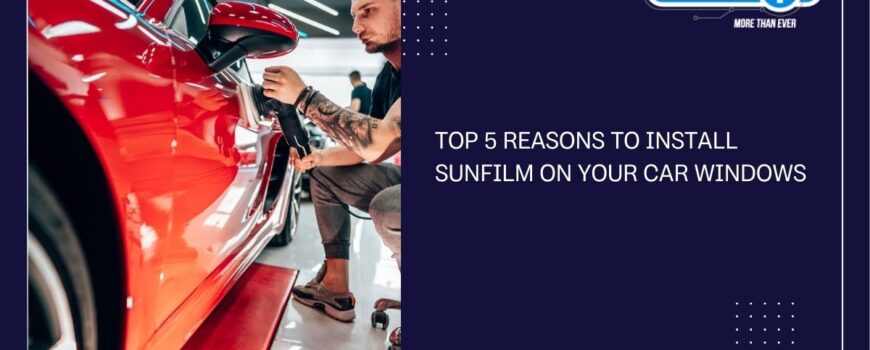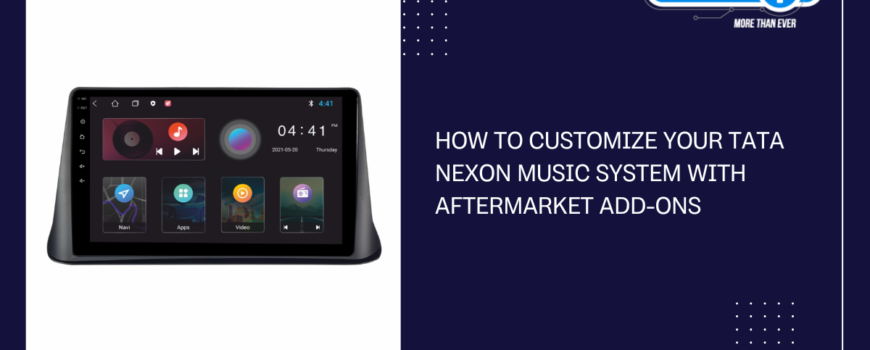What are the essential car accessories every new car owner needs? Check out our top picks, including high-tech solutions from Circuit-i.


What are the essential car accessories every new car owner needs? Check out our top picks, including high-tech solutions from Circuit-i.

Wondering how sunfilm in car can enhance your driving experience? Discover five key benefits, from reducing heat and UV exposure to improving privacy and safety!

The Tata Nexon is a versatile SUV with impressive features, but when it comes to creating a truly immersive audio experience, upgrading the Nexon Music System with aftermarket add-ons can take your drives to the next level. Whether you’re looking to enhance sound clarity, add more bass, or incorporate smart features like voice control, you can upgrade your Nexon’s audio system. n’s audio system. Let’s explore how to customize your Nexon Music System with aftermarket add-ons to get the most out of your in-car entertainment.
While the factory-installed Nexon Music System is sufficient for many, audio enthusiasts know there’s always room for improvement. Upgrading your system allows you to enjoy a more immersive, high-quality sound experience and can offer advanced features like GPS navigation, smartphone integration, and superior sound processing.
Whether you’re a casual listener or an audiophile, upgrading your Nexon Music System offers several benefits:

Customizing the Nexon Music System can be done in various ways, depending on your needs and preferences. Below are some popular aftermarket add-ons to consider:
1. Upgrading the Speakers
The first step to enhancing your Nexon’s audio experience is upgrading the speakers. Factory-installed speakers are often limited in range, meaning they might not deliver the level of sound quality that aftermarket options provide.
Why upgrade your speakers?
2. Adding a Subwoofer
If you love deep, punchy bass, adding a subwoofer is a great way to elevate your Nexon’s audio system. Subwoofers are designed to handle low-frequency sounds that regular speakers can’t produce effectively.
Why add a subwoofer?
3. Amplifiers for Superior Sound Quality
An amplifier is an essential component if you want to get the most out of your new speakers and subwoofers. Amplifiers provide the extra power your Nexon Music System needs to deliver clear, distortion-free sound at higher volumes.
Why add an amplifier?
4. Upgrading the Head Unit
One of the best ways to completely overhaul your Nexon Music System is by upgrading the head unit (the stereo or media player). A modern aftermarket head unit can offer a range of advanced features that improve both audio quality and functionality.
For Tata Nexon owners looking to enhance their music system with a more modern, feature-rich head unit, Circuit-i’s Nexon Car Stereo is a perfect choice. The Circuit-i Car Stereo is a 9.0-inch Android player that comes with Android Version 8.0 Oreo, offering a seamless blend of entertainment, navigation, and smart features. Here are some key features that make this head unit stand out:
With its customizable options and advanced features, Circuit-i’s Nexon Car Stereo is designed to provide a truly premium in-car entertainment experience.
When it comes to upgrading the Nexon Music System, Circuit-i has you covered with top-of-the-line products and expertise. Circuit-i has been a leader in the car multimedia industry since 1994, delivering innovative solutions for car infotainment and navigation systems.
Whether you’re looking to upgrade your car’s stereo system or add new multimedia capabilities, Circuit-i provides state-of-the-art, reliable products that are perfect for customizing your Tata Nexon.
Upgrading your Nexon Music System with aftermarket add-ons is one of the best ways to improve your driving experience, whether you’re looking for better sound quality or more advanced features. From speaker upgrades and subwoofers to amplifiers and head units, the possibilities for customization are endless.
Ready to take your Nexon’s audio system to the next level? Trust Circuit-i for all your car electronics needs and upgrade your Nexon Music System for an unparalleled in-car experience!

Looking to build the perfect car audio system? Discover how Circuit-i can enhance your in-car entertainment with cutting-edge technology